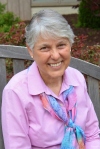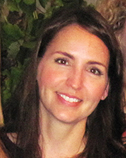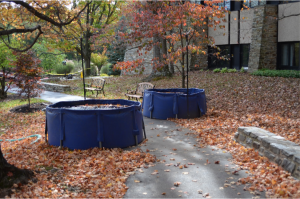Today’s post is by Kimberly Borin
I was praying and filled to the brim with so many ideas, desires, and hopes. I was looking for a new direction, a calling, next steps, and a road map clarifying the journey ahead. In my earnest prayer, I asked, “Lord, what shall I do next?” I sensed a small whisper of an answer. I heard this:
“ Sit.”
Surely, I must have missed something. Sit? Was this it? I was hoping for something with at least two syllables, something grander, maybe even life changing! I thought perhaps I must have misheard, so I prayed again and again and then again on another day. The answer was always the same, a gentle loving nudge to do nothing else but “Sit.”
And so it was. I began to sit and more importantly notice when I wasn’t sitting. I still tried to explore and try on different versions of sitting. I thought perhaps I was to: sit there, sit with me, sit down and enjoy the ride, sit still, or even, sit down and eat your vegetables. I even tried; sit, stay!, sit with us, sit in the sun, sit down and put your feet up, and sit down and daydream awhile. While many of those options seemed lovely, nothing fit except to “Sit.”
My brother-in-law had even mentioned that he learned to pray by focusing on a word that was revealed in prayer. He was granted a three-syllable word – filled with transformation, new beginnings, and insight. Later, I shared with him my little three-letter word. With head down, I slowly revealed, “All I got was, ‘Sit.’”
My sacred word and spiritual directive began to take on more meaning. It granted me permission to rest, to wait on a decision, and to hold my emotions in check until clarity was given. It helped me to be present to God, to grace, to mercy and even the sound of the world around me. I learned to sit with mystery, my breath, with time, and the sun. I learned to sit on the floor, on the porch, with friends, with children, with those who were sick and those who needed an ear. The sitting taught me about being fully present.
Later, I shared with my spiritual director my little word, and she silently nodded with a knowing smile. I could tell that she trusted the word was more powerful than I was yet to realize. What was interesting about the timing of this was that I had just recovered from a concussion, where I had already spent a fair amount of time lying down. I had also entered into training to be a contemplative prayer retreat leader and would need to understand the power of sitting and how to nourish others in their ability be in silence too.
I began to see that I was not alone in sitting. Rose Mary Dougherty’s book, Discernment, reminded me of the importance of finding this still place and listening. She quoted Rachel Naomi Remen who wrote about “querencia,” a term used in bullfighting. It was about being able to find our safe and quiet place, to remember who we are, and to gather our strength and wisdom for the next step. Pierre Teilhard de Chardin, S.J. reminded me to “Trust in the slow work of God” by writing, “Only God could say what this new spirit gradually forming within you will be. Give our Lord the benefit of believing that God’s own hand is leading you, and accept the anxiety of feeling yourself in suspense and incomplete.” Rainer Maria Rilke also affirmed this, encouraging us be with and to “live into the questions.” It seems that slowing down, sitting, and surrendering are just what are needed to be available to God and the presence of love.
That little word continues to help me be present and to laugh out loud, especially when I think I have something big to do in the world. I can’t help but smile at my simple directive to sit down, be available to love in the world and breathe. I am still learning to sit and I am still trying to understand the special nudge I received. I find it most helpful when people tell me they are hoping for a big inspirational moment, or a road map of next steps and wonder why they have been given only a simple thing to do.
In those moments, I feel myself nodding silently with a smile on my face. I know that whatever they have been given no matter what size or how many syllables, it will lead to a chance to sit, to be, and to be loved.

Dr. Kimberly Borin is a School Counselor, Retreat Leader, and in training to be a Spiritual Director with the Shalem Institute. She believes that we can find peace and grace in simple ways, each moment. She has been a teacher and counselor since 1989 and holds a doctorate in Education, a master degree in Educational Leadership and one in School Counseling. She is an Ananda Yoga Teacher for adults and children and the author of the Laughter Salad series of books. You can learn more about Kimberly at: www.TheEncouragingWorks.com.

 Patience Robbins is a graduate of Shalem’s
Patience Robbins is a graduate of Shalem’s 
 Savannah Kate Coffey is a graduate of Columbia Theological Seminary and Shalem’s
Savannah Kate Coffey is a graduate of Columbia Theological Seminary and Shalem’s 
 On one side of the pond, I observed two large round tubs, bright blue plastic, like small swimming pools, full of water and leaves. On the other side of the pond, yellow caution tape festooned the walkway and a large black hose emerged from the pond, snaking over the walk and emptying out onto the grass. I looked across the pond to the footbridge – a beloved place to walk and reflect. Something like a ladder was suspended below the bridge across its entire length. More of the yellow caution tape was draped over either end of the bridge, barring entry.
On one side of the pond, I observed two large round tubs, bright blue plastic, like small swimming pools, full of water and leaves. On the other side of the pond, yellow caution tape festooned the walkway and a large black hose emerged from the pond, snaking over the walk and emptying out onto the grass. I looked across the pond to the footbridge – a beloved place to walk and reflect. Something like a ladder was suspended below the bridge across its entire length. More of the yellow caution tape was draped over either end of the bridge, barring entry.


 Susan Robbins Etherton is a graduate of
Susan Robbins Etherton is a graduate of  The first evening a thick fog settled in. Tuesday morning I was sorry to see it remained and thought, “It’ll burn off by lunchtime.” At noon, I hoped the view would clear by late afternoon. When I went to bed, the lights in the valley were obscured by a dense white cloud. Wednesday morning I was disappointed to miss a second sunrise behind the fog. Even though all the doors and windows were closed, the tiny squares of every screen filled with water drops. I could not see the mountain range or the valley or even a poplar tree. Surrounded by a blanket of white moisture, I felt a little uneasy and claustrophobic. I don’t like being closed in. I sleep with my bedroom door open and choose not to have curtains or blinds in my kitchen, living room and dining room. I like light, and I like to be able to see what is outside.
The first evening a thick fog settled in. Tuesday morning I was sorry to see it remained and thought, “It’ll burn off by lunchtime.” At noon, I hoped the view would clear by late afternoon. When I went to bed, the lights in the valley were obscured by a dense white cloud. Wednesday morning I was disappointed to miss a second sunrise behind the fog. Even though all the doors and windows were closed, the tiny squares of every screen filled with water drops. I could not see the mountain range or the valley or even a poplar tree. Surrounded by a blanket of white moisture, I felt a little uneasy and claustrophobic. I don’t like being closed in. I sleep with my bedroom door open and choose not to have curtains or blinds in my kitchen, living room and dining room. I like light, and I like to be able to see what is outside.
